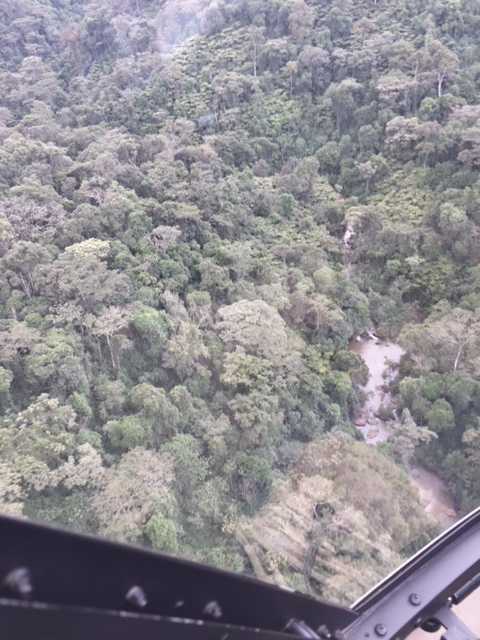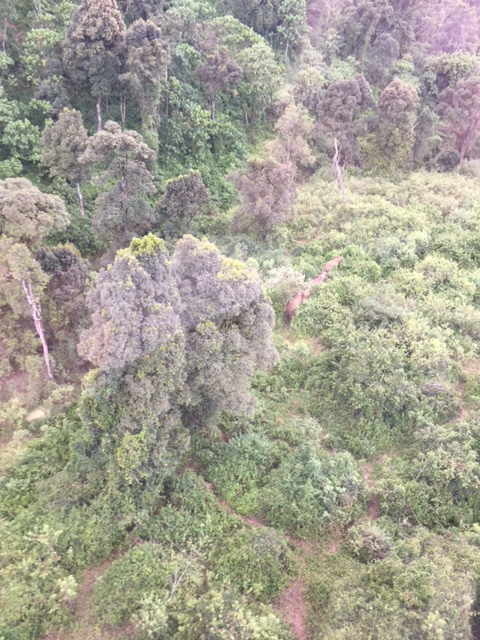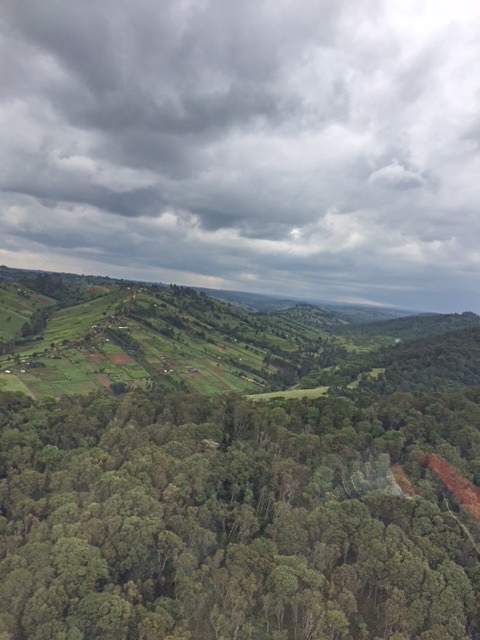I was fortunate enough to spend some time with Mara Elephant Project CEO Marc Goss seeing firsthand the operations MEP is focusing on in the most threatened areas of the Mara ecosystem. The most impactful being the Mau Forest.

The upper Mara River – deep in indigenous forest – Mara Mau West.
The Mau Forest was said to hold 600 elephants in the 2016 Kenya Wildlife Service led count and is the stronghold of the iconic forest antelope – the Eastern Mountain Bongo (tregalaphus eurycerus isaaci). It is the largest of the two bongo types and ONLY found in the forests of Kenya along both sides of the Great Rift Valley – incorporating the Mau range including Mt Eburru, the Aberdares and Mount Kenya. The Mau Forest is also extremely important as the headwaters and catchment of the Mara River – the waterway on which millions of wildebeest, and a host of plains game, elephant and all species inhabiting the Great Mara Ecosystem and the northern Serengeti ecosystem all of which depend upon what starts in the Mau uplands.

The Mara River further west running through heavily settled farm land that exists between the Mau forests and the Greater Mara Ecosystem.
This forest is in danger along with the elephants and forest antelope that call it home with a total of no more than 100 bongo antelope left in the wild currently. MEP has taken steps in 2018 to protect this critical habitat. First, along with support from the David Sheldrick Wildlife Trust, MEP has set up a permanent ranger unit in the Mau Forest that is tasked with shutting down illegal logging sites, removing harmful snares, rooting out poachers and mitigating human-elephant conflict. MEP has also collared the first two elephants ever in this forest, Bettye and Wilbur, to collect better movement data on elephants living in the forest.

Collared elephant Bettye with four others in the Mara Mau river catchment forest.
While with Marc I was able to meet MEP patrol unit rangers, aerially monitor Bettye and Wilbur, and fly over bongo stronghold areas. Despite the settlements encroaching on the forest, some of which are currently being removed by the authorities, it is of considerable size, 15,000 km2, a lot of ground to cover and protect. 
Settlements – some of which are being removed under a current major exercise where they have settled illegally and have no title deeds.
That’s why we need your support! A second Mau Forest ranger unit is needed to ensure that this vast endangered forest is protected from illegal logging, poaching and encroaching farms. Experiencing firsthand the strides MEP has taken in 2018 to protect this vital habitat, expanding this initiative would have a significant impact on the elephants, bongo and other wildlife living in the Mau Forest.


